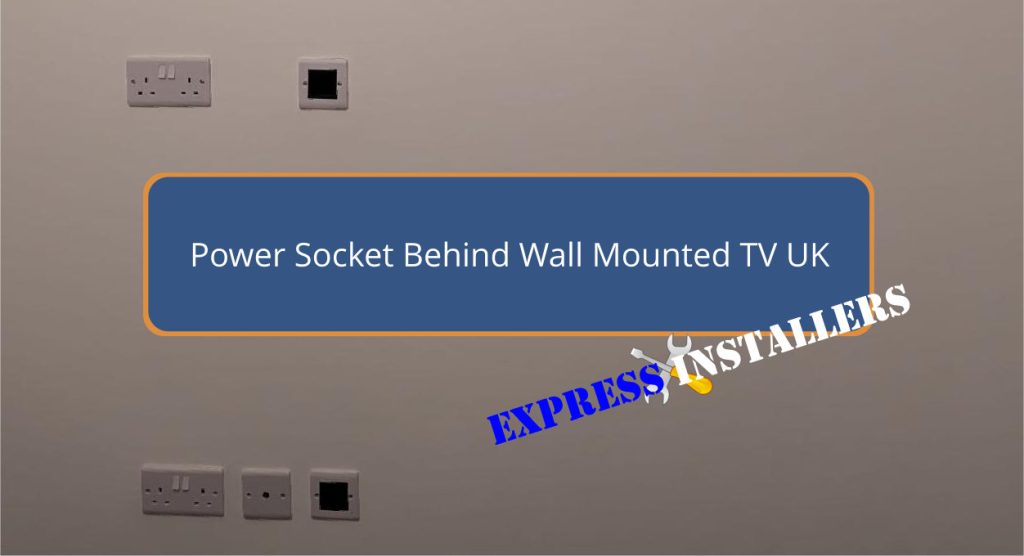
When installing a power socket behind a wall-mounted TV in the UK, it is essential to select a double socket for convenience and compatibility.
Position the socket approximately 200mm below the centre line of the TV or slightly above the TV bracket to guarantee easy accessibility and effective cable management.
Always use a qualified electrician to adhere to safety standards and electrical regulations.
Our vetted professionals can typically complete installations in under two hours, which means you won’t be waiting long to enjoy your newly mounted TV.
We also offer cable management solutions, guaranteeing a clean and hazard-free setup.
Proper installation not only powers your TV safely but also enhances the overall appearance by keeping cables neatly organised.
Exploring further will reveal additional useful tips and guidelines.
Quick Summary
- Choose a double socket with USB outlets to fit neatly behind the TV for convenience and versatility.
- Position the socket up to 200mm below the TV’s centre line for optimal accessibility.
- Ensure the socket is installed by a qualified electrician to adhere to UK safety standards.
- For Power Socket Installation, TV Wall Mounting and cable concealing in all wall types? Fill out the Form Below for instant quotation and same-day/ next-day TV wall mounting service.
Choosing the Right Socket
When selecting a power socket for behind a wall-mounted TV, it is important to opt for a double socket with USB outlets to efficiently power multiple devices.
Among the various socket options, choosing one that can neatly fit behind the TV without affecting the wall’s aesthetics is essential.
Positioning considerations are key; the socket should ideally be centred and placed up to 200mm below the TV’s centre line.
This placement guarantees easy access and simplifies cable management.
Additionally, it is advisable to select a socket just above the TV bracket, which helps in easy connection of cables and supports a cleaner setup.
Opting for a socket that complements the wall colour also helps maintain a tidy appearance.
Installation Safety Guidelines
Having outlined the ideal positioning and choice of sockets, it is equally important to adhere to installation safety guidelines to prevent any electrical hazards.
When installing a power socket behind a wall-mounted TV, consider the following safety precautions and compliance with electrical regulations:
- Professional Installation: Always use a qualified electrician for installation to minimise DIY risks and guarantee adherence to UK electrical standards.
- Regular Inspections: Schedule inspections for wiring and connections to maintain safety and functionality, preventing potential electrical hazards.
- Appropriate Positioning: Ensure the socket is appropriately positioned to support the TV bracket and cables without compromising the structural integrity or safety of the installation.
Adhering to these guidelines guarantees a safe and secure setup.
Cable Management Solutions
How can you guarantee efficient cable management when installing a power socket behind a wall-mounted TV in the UK?
These cable concealment options not only streamline the appearance but also prevent damage to wiring.
In addition to mounting your TV, we also offer in-wall cable concealing services. This means no more unsightly cables cluttering your space.
Whether it’s a plasterboard wall, a brick wall, or even inside a fireplace, our technicians are equipped to handle it all.
This service not only enhances the aesthetics of your room but also keeps your cables safe from wear and tear.
Don’t settle for less; choose Express Installers for a hassle-free and professional TV mounting experience.
Frequently Asked Questions
Where Do You Put the Socket on a Wall Mounted TV?
For ideal socket placement on a wall-mounted TV, install the power socket approximately 1 to 1.5 meters above the floor, ideally behind the TV or in the lower left corner to minimise visibility.
How Do I Hide the Cables on My Wall Mounted TV UK?
To hide cables on a wall-mounted TV in the UK, consider using cable raceways or cord covers. These allow for a neat arrangement and conceal wires effectively, maintaining a clean aesthetic appearance.
Can You Run Power Cable Behind Wall UK?
Yes, you can run a power cable behind a wall in the UK, but it must adhere to building regulations and safety considerations, including proper installation techniques to guarantee electrical safety and functionality.
Conclusion
To sum up, the strategic placement and installation of power sockets behind wall-mounted TVs in the UK enhance both aesthetic appeal and functionality.
Adherence to safety guidelines and proper use of tools are crucial for effective installation.
Efficient cable management further guarantees safety and maintains a clean look.
Contact Express Installers for same-day/ next day installation slots.
